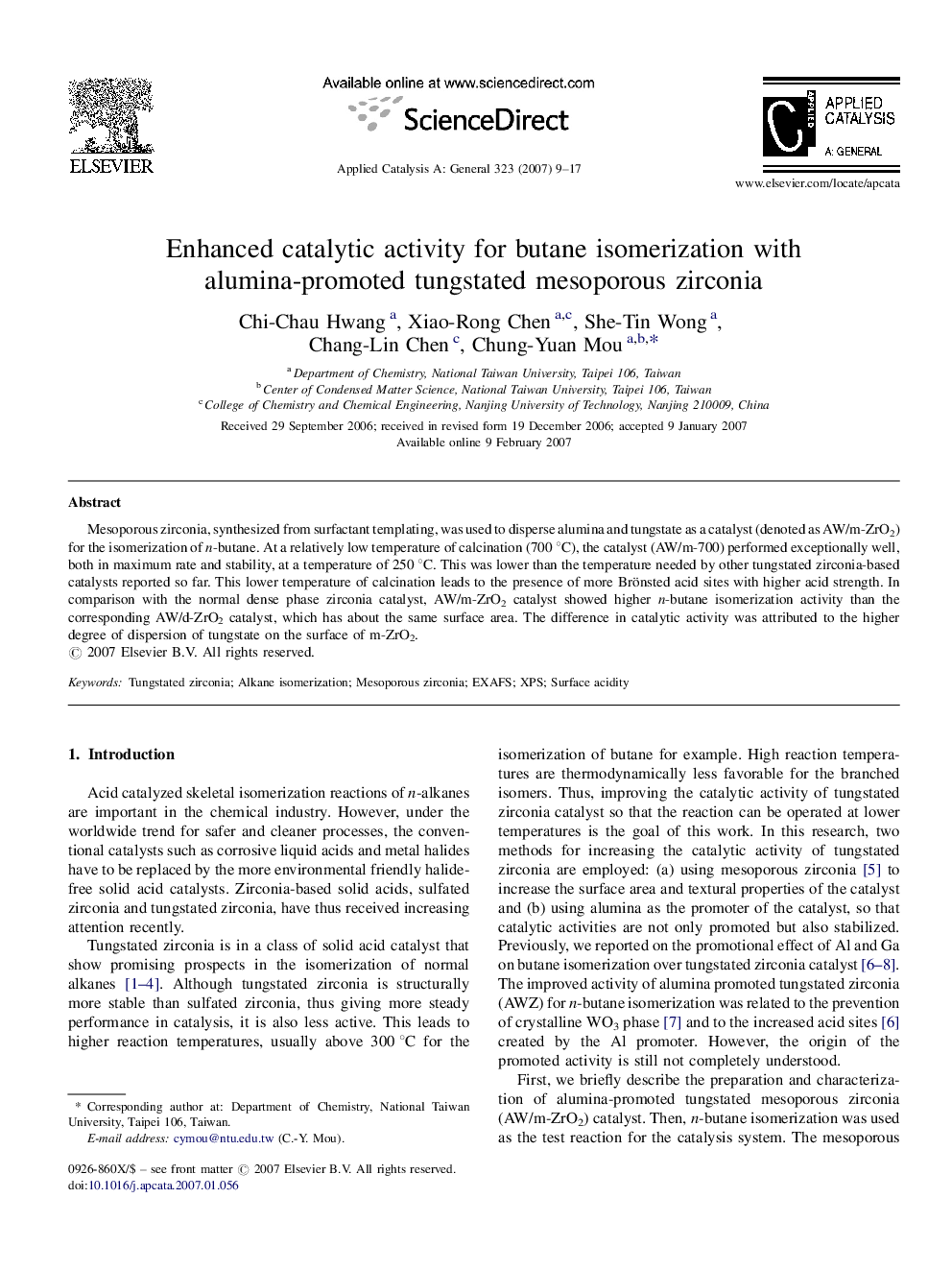| Article ID | Journal | Published Year | Pages | File Type |
|---|---|---|---|---|
| 43603 | Applied Catalysis A: General | 2007 | 9 Pages |
Mesoporous zirconia, synthesized from surfactant templating, was used to disperse alumina and tungstate as a catalyst (denoted as AW/m-ZrO2) for the isomerization of n-butane. At a relatively low temperature of calcination (700 °C), the catalyst (AW/m-700) performed exceptionally well, both in maximum rate and stability, at a temperature of 250 °C. This was lower than the temperature needed by other tungstated zirconia-based catalysts reported so far. This lower temperature of calcination leads to the presence of more Brönsted acid sites with higher acid strength. In comparison with the normal dense phase zirconia catalyst, AW/m-ZrO2 catalyst showed higher n-butane isomerization activity than the corresponding AW/d-ZrO2 catalyst, which has about the same surface area. The difference in catalytic activity was attributed to the higher degree of dispersion of tungstate on the surface of m-ZrO2.
Graphical abstractAlumina-promoted tungstated mesoporous zirconia (AW/m-ZrO2) catalysts were synthesized and tested on n-butane isomerization. They possess high catalytic activity and stability. The composition of acid sites on AW/m-ZrO2 catalysts calcined at different temperatures was then correlated to their catalytic performances. The unusually high catalytic activity was attributed to better dispersion of tungstate species on zirconia. Figure optionsDownload full-size imageDownload as PowerPoint slide
